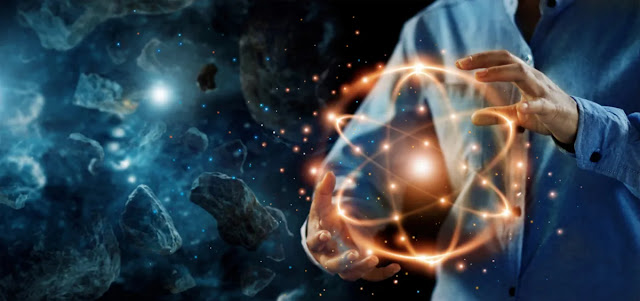Nobel Prize-winning physicist Richard Feynman once famously declared that “nobody understands quantum mechanics,” although a new experiment involving quantum entangled particles does at least help to illustrate one of the key principles of this mystifying branch of physics. Using a trick called quantum pseudo-telepathy, the exercise confirms that reality does not exist in a fixed state until it is measured.
The idea that physical objects can exist in
multiple states simultaneously is known as wave-particle duality and is
demonstrated by the famous double slit experiment. Using this iconic set-up,
scientists have established that photons (light particles) spread out through
space like a wave when no one is watching, but “collapse” to a single fixed
point the moment they are observed.
The ability to pull a concrete reality from
the quantum ether in this way raises the possibility of overcoming the
constraints of classical statistics. To illustrate this point, physicists have
designed a number of theoretical games in which players have a limited
probability of winning as long as they are unable to communicate with one
another, but which can be consistently conquered using quantum
pseudo-telepathy.
For example, the Mermin-Peres Magic
Square Game involves two hypothetical players called Alice and Bob, each of
whom must fill in every square in a three-by-three grid with either a “1” or a
“-1”. A referee then randomly selects one of Alice’s rows and one of Bob’s
columns, and if both players have the same number in the overlapping square
then they win.
To prevent Alice and Bob from fixing the
game by agreeing to just write the same number in every single square, the
rules demand that the numbers in each of Alice’s rows multiply to give 1 while
the numbers in Bob’s columns combine to produce -1. Most importantly of all,
the two players are not allowed to talk to one another during the game.
When such a game is played in the real
world, the two players’ nine-square grids must differ in at least one square,
which means that it is statistically impossible to win more than eight times in
nine rounds. In the quantum realm, however, Alice and Bob may be able to win
every time.
This is because quantum mechanics eliminates
the necessity for each square to contain a fixed value before the round is
played, allowing a “1” or “-1” to emerge only once the referee has made a
selection. The entire grid is therefore completely fluid until it is observed,
and can be reconfigured with each new round.
Even better, each square in Bob’s grid can
be quantum entangled with the corresponding square in Alice’s grid, so that as
soon as a fixed value is observed in one player’s square, the other player’s
square “collapses” into the same value.
Obviously, such a game can’t be played using
paper and ink, but can be demonstrated using quantum entangled particles. In
a new study appearing
next week in the journal Physical Review Letters, scientists explain how they used
ultrafast laser pulses to excite barium borate crystals, generating pairs of
“hyperentangled” photons.
More specifically, the photons were
entangled such that the polarization of one was intrinsically linked to the
orbital angular momentum of the other. Using these values as surrogates for
Alice and Bob’s numbers, the researchers simulated 1,075,930 rounds of the
Mermin-Peres game, winning 1,009,610 of these.
Though not perfect, the 93.84 percent win rate does exceed what should be possible according to classical statistics, thus proving that physical reality is not fixed and can be manipulated using quantum entanglement.


